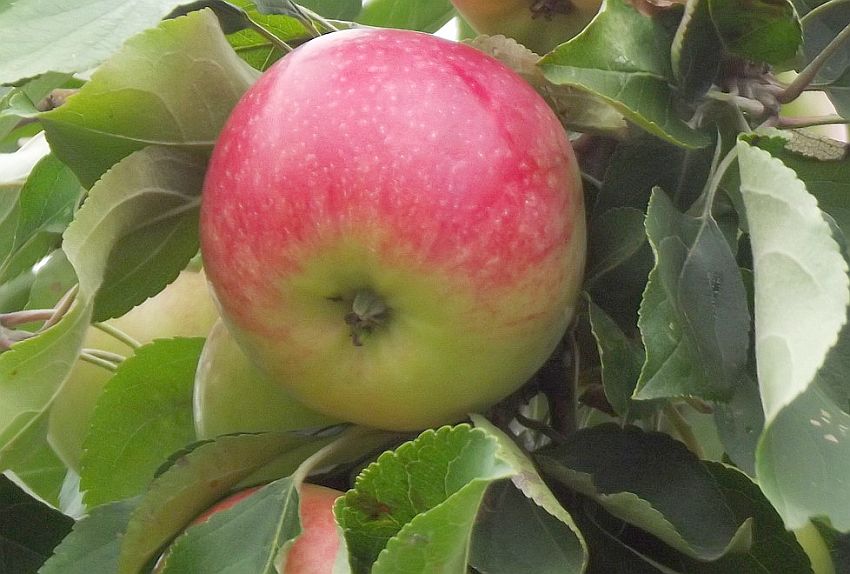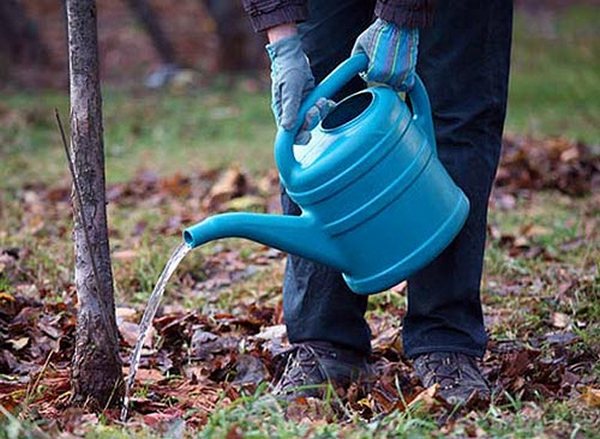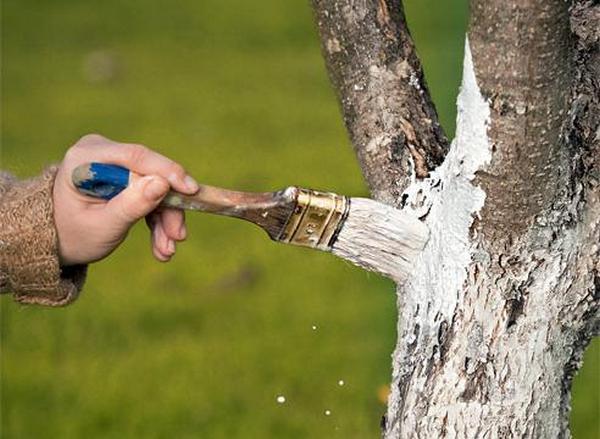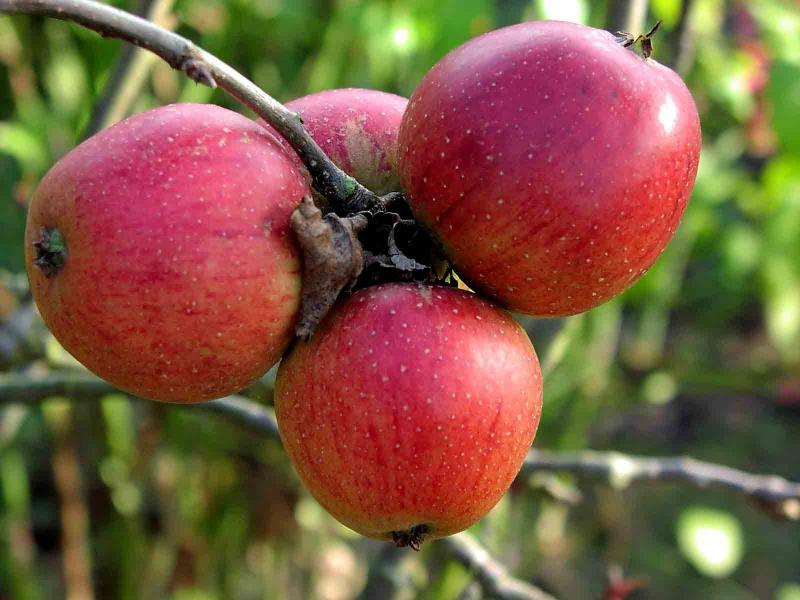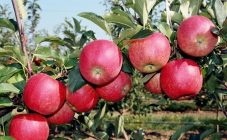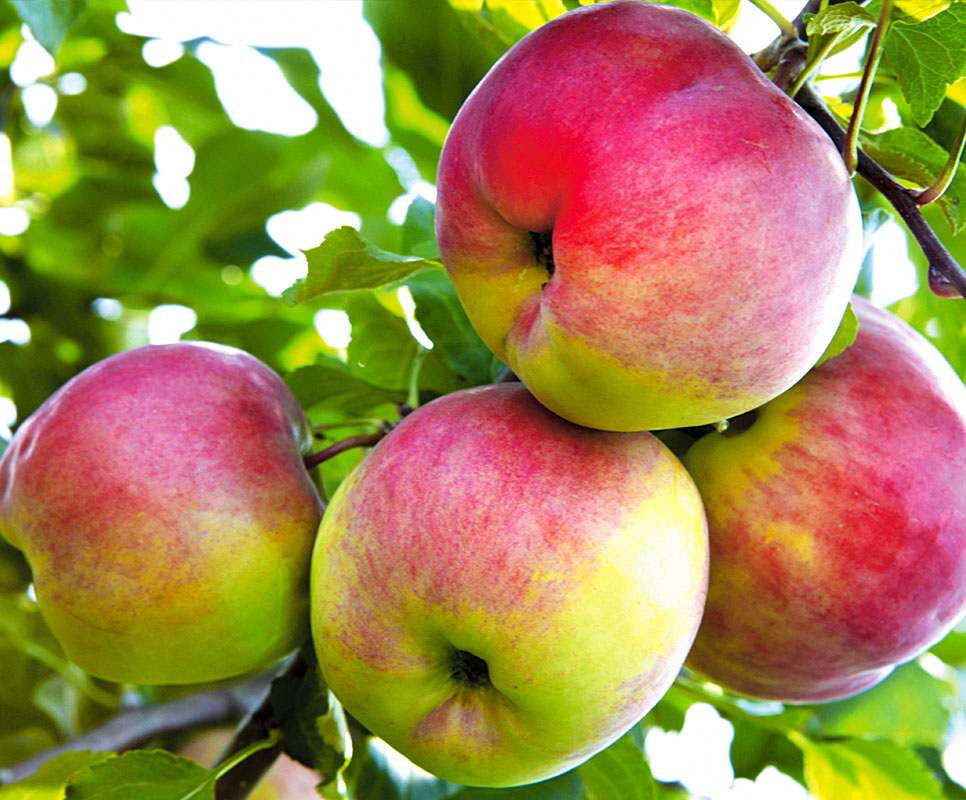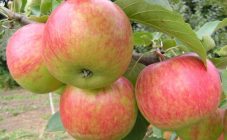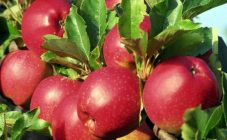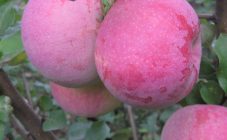Content:
The Melba apple tree is one of the most common and famous species. It was created by Canadian gardeners in the 19th century. The hybrid is named after the singer popular at the time. The plant got to Europe, and then to Russia at the beginning of the 20th century. At the same time, it was registered in the Russian State Register of Fruit and Vegetable Crops under the designation "Melba", but the name Melba stuck among the people.
This culture does not have high frost resistance and winter hardiness, therefore it cannot be bred in the regions of Siberia and the Arctic. Trees grow poorly in the Far East and in a region such as the Urals, although these apples can be planted in the southern part of the mountainous region. There are several types of hybrid common in Russia:
- apple-tree Red Melba, the most resistant to frost;
- Cherished;
- Caravel;
- Scarlet early bull's-eye, common in the middle zone of the country;
- Prima;
- Early red;
- apple tree Melba's daughter.
Crop technical data
In agricultural reference books in the Melba apple tree section, the description of the hybrid is as follows:
- The plant has a medium-sized crown (up to 6-7 m in diameter), moreover, rounded in shape and slightly directed upwards. The stem is thick, covered with dark brown bark.
- At the age of 3 years, the hybrid acquires a columnar structure. After that, the crown characteristic of the apple tree begins to form.
- The flowering of the hybrid begins in spring. The earliest date is mid-March. On the branches, large buds bloom, painted in white, yellow or pink with purple veins of tone.
- The branches are slightly lowered down, have an average thickness. The height of the tree ranges from 3-4 m. The leaves have an oblong shape with jagged edges. They are painted in light green tones.
- Melba apples are large, spherical, slightly flattened, slightly elongated to the bottom. They have a yellow-green color with red stripes.
- Fruit characteristics: the average weight of each specimen is in the range of 0.12-0.15 kg, but sometimes it grows to 0.2 kg. Their flesh is white, rather juicy. The taste is sweet with a sweet smell and sourness.
- Although all varieties of Melba belong to self-fertile species, they practically cannot cope with independent reproduction. This type of apple requires an outside pollinator. Antonovka, Belfer-Kitayka, Borovinka are suitable for this.
Plants produce a regular crop for 8-9 years, and in subsequent periods of fruit appearance alternate with 1-2 years of rest.
The yield of the variety reaches 90 kg / ha. An apple tree such as Krasnaya Melba can bring up to 70-80 kg, therefore it is often bred in the Moscow region and throughout the central strip of the country. For the southern regions, cultivation of all types of plants is characteristic.
Agricultural technology of growing a hybrid
Melba saplings should be bought so that they can be planted in the last week of September or in early October. It is necessary to choose healthy specimens at least 60-70 cm long with developed skeletal branches and roots, and whole bark. They should be 1-2 years old.
In the middle lane, the optimal time for planting seedlings is spring (end of March or April). The apple tree is planted at that moment, until its buds have blossomed. It is necessary to take into account the fact that the prices for seedlings in Moscow and other cities are different.
If the gardener lives in Siberia, then it is better to plant Melba at the end of May. It is recommended to form an apple tree there as a dwarf, creeping species on shale soils. This will protect the hybrid from severe frosts.
However, for Melba, loamy soil is better. If the composition of the soil on the site is different, then it is specially prepared for planting apple trees. River sand, peat mixture, compost (you can replace it with manure) are taken in equal proportions, and then the components are mixed. The resulting composition is poured into a hole with a diameter of 100 cm and a depth of 800 mm, watered with plenty of water.
The seedling is preliminarily prepared by freeing the crown from the leaves. If it is small in size, then for 6-7 days it is kept in a bucket of water so that the stem is filled with the necessary moisture. After that, it can be planted in the allocated place. You can stick a peg nearby to hold the growing specimen for the first time. A large distance of up to 2 m must be left between the trees.
For the rooting of the plant, it is necessary that the air temperature does not fall below + 4 ° C. The root roller should not be higher than 50 cm, otherwise moisture will accumulate under the roots, which will cause them to rot. Work on planting apple trees is best done in the afternoon.
In the first year, the crown of the hybrid will look like a column. It is formed during planned pruning in the spring. In this case, all the lateral branches are removed at a distance of 2-3 buds. In a later period, over the next 2-3 years, the trunk is reduced by 30%, and processes are left on the skeletal parts that grow at an angle of 45 °. Others are removed before the first bud.
There is no need to ram the soil in the near-trunk space, you can crush it slightly. When the groundwater is close to the surface of the site, then you will have to make a drainage system, otherwise the excess moisture will destroy the seedlings. Because of this, gardeners sometimes plant plants on artificial mounds to avoid problems with excess moisture.
Top dressing
Melba is fed during the flowering period. The space near the trunk is dug up, wood ash (1 tbsp.), Potassium chloride, phosphates (2 tbsp. Spoons) are added to the soil. You can add 1-2 buckets of humus.
In the summer, manure is introduced into the ground (ratio with water 1:12), bird droppings (ratio 1:20) or special nitrogen fertilizing. Fertilizers are best applied together with nettle infusion. To do it, you need:
- chop the plant, place in a container, fill with water (1: 2);
- close the container with a tight lid, leave to infuse for 72-96 hours;
- after the indicated aging period, strain the solution through cheesecloth.
For each seedling, you will need up to 10 liters of the resulting top dressing.
The correct moisture regimen for the middle lane is 60 liters per month for each tree. If the soil is clayey, then this volume of water is reduced to 10-15 liters. After the snow has melted, you can not water the apple trees, as they have enough moisture.
In winter, it is better to cover the seedlings with foil or warm material. However, Melba can endure short-term frosts; with a prolonged cold, her branches break off. Preparation for cold weather includes the following activities:
- apple trees are carefully examined;
- cut off broken or completely dry branches, remove exfoliated areas of the bark;
- whitewash all trunks;
- treated with drugs for pests, feed with manure and compost.
If the gardener lives in the southern region, then the roots are insulated by covering them with a thick layer of mulch.
Diseases and pests
If scab has formed on the plants, then the following remedies will help to eliminate it:
- 9-10 gamair tablets are dissolved in 1 bucket of water, and then the apple trees are treated (and so 3 times per season);
- 20 ml of phytolavin are dissolved in 10 liters of water and the crown and trunk are sprayed (up to 4 times per season).
It is possible to coat the affected area with a solution of ammonium sulfate, ammonium or potassium nitrate, potassium salts.
As a preventive measure, regular sanitary pruning is used or all fallen leaves are removed and burned. Chemical treatment of the hybrid is also recommended, which is carried out in 3 stages:
- when the kidneys begin to open, the entire trunk is sprayed with Bordeaux liquid and ammonium nitrate solution;
- with active flowering with the specified composition, a second treatment is carried out;
- the same procedure using the same components is carried out during fruiting and 2 weeks after.
When symptoms of powdery mildew appear, you need to treat the seedling with colloidal sulfur 3 times. The first time this is done during flowering, using a 2% solution of the substance, the second and third watering is carried out with 1% infusion of the chemical after the flowers fall, and then again after 2-3 weeks.
Any apple parasite found on the bark or leaves must be killed. Many people use preventive measures, for example, they treat apple trees with special agents to destroy parasites. Dimilin is suitable for fighting moths, inta-vira with caterpillars. If it is not possible to purchase them, then whitewashing the stem of the apple tree will help. To save them from rodents, apple trees are covered with various insulating materials.
Advantages and disadvantages of the variety
The Melba apple variety has the following advantages:
- increased productivity, fast ripening of fruits;
- good appearance and taste;
- the ability to endure long-term transportation;
- the possibility of transferring small cold weather.
Disadvantages of a hybrid:
- insufficient ability to reproduce independently;
- the obligatory presence in the garden of other varieties of pollinating apple trees;
- the need for additional care due to Melba's susceptibility to scab;
- low resistance to severe cold snaps and frost;
- cyclical appearance of fruits in specimens over 8-10 years old.
Despite these shortcomings, the Melba Red Apple variety is the most popular among gardeners. With all the necessary agrotechnical measures, the hybrid will consistently supply the gardener with a large number of fruits for 10 years.
